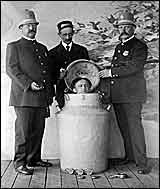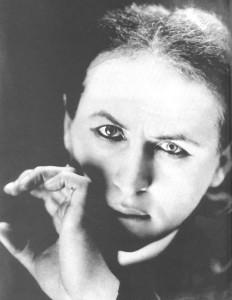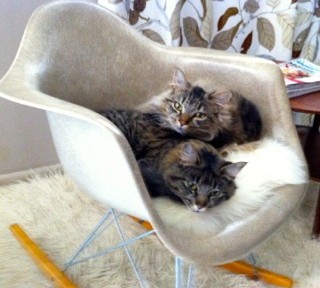
Harry Houdini was a genius at using limitations to his advantage.
One of his most daring escapes, from inside a locked metal container filled with milk,
was actually safer inside the can than outside. Inside, Harry had good visibility and enough oxygen to pick his handcuffs and unlatch the lid. Not that you or I could do it, mind you, but Harry realized that escaping from within a locked can was safer and more reliable than being, say, strapped to the outside of the can or other heavy object and being thrown into a lake (although he did that, too). Always the consummate showman, Harry looked for challenges that were the most reasonable risk that still yielded drama and a rapt audience. If you want to be an amazing problem solver, start by taking a few more calculated risks. Then you’re ready to expand your perspective and move past limiting beliefs like the following:
6. That’s Not My Job!
In an era of hyper-specialization, it’s those who happily explore completely unrelated areas of life and knowledge who best see that everything is related. This goes back to what ad man Carl Ally said about creative persons—they want to be know-it-alls.
Sure, you’ve got to know the specialized stuff in your field, but if you view yourself as an explorer rather than a highly-specialized cog in the machine, you’ll run circles around the technical masters in your field and find lasting success.
7. I’m a “Serious” Person
Most of what keeps us civilized boils down to conformity, consistency, shared values, and yes, thinking about things the same way everyone else does. There’s nothing wrong with that necessarily, but if you can accept that it’s actually nothing more than “groupthink” that seeks to smooth the hard edges of society, you can then give yourself permission to turn everything that is currently accepted upside down and shake out the illusions. Only then will you consistently think and express yourself as a passionate, unique individual.
Leaders from Egyptian pharaohs to Chinese emperors and European royalty have consulted with fools, or court jesters, when faced with tough problems. The persona of the fool allowed the truth to be told without the usual ramifications that might come with speaking blasphemy or challenging ingrained social conventions. Give yourself permission to be a fool and see things as they really are. A related approach is to play the role of “devil’s advocate” and entertain the view that runs counter to conventional thinking. The greatest inventors, leaders and ceos in history have all run afoul of popular opinion at critical times in order to create something truly groundbreaking.
8. Ambiguity Is Annoying!
We rationally realize that most every situation is ambiguous to some degree. And although dividing complex situations into black and white boxes can lead to disaster, we still do it. It’s an innate characteristic of human psychology to desire certainty (or at least the illusion of certainty) but it’s the creative thinker who rejects the false comfort of clarity when it’s not appropriate or conducive to expansive thinking.
If you’re looking to innovate, then ambiguity is your best friend. The fact that most people are uncomfortable exploring uncertainty gives you an advantage, as long as you can embrace ambiguity rather than run from it.
9. Being Wrong Is Bad
We hate being wrong, and yet mistakes often teach us the most. Thomas Edison was wrong 1,800 times before getting the light bulb right. Steve Jobs had as many flaming product and entrepreneurial failures (remember the Apple “Cube” or the firm “Next”?) as he did soaring successes. The greatest strength of both men was that they were not afraid to be wrong and valued the information gleaned with every misstep.
The best thing we can do is learn from our mistakes, but we have to free ourselves to make mistakes in the first place. Just try out your ideas and see what happens, take what you learn, and try something else. Ask yourself, “What’s the worst that can happen if I’m wrong?”
Rarely are the consequences earth shattering or life threatening.
10. I’m Not Creative
Denying your own creativity is like denying that you’re a human being. We’re all limitlessly creative, but only to the extent that we realize that we create our own limits with the way we think. If you tell yourself you’re not creative, in time it becomes true.
In that sense, awakening your own creativity is similar to the path reported by those who seek spiritual enlightenment. You’re already enlightened, just like you’re already creative, but you have to strip away all of your delusions before you can see it. Acknowledge that you’re inherently creative, and then start tearing down the other barriers you’ve allowed to be created in your mind.
This post was inspired by Roger von Oech’s A Whack on the Side of the Head, which is a great primer for battling mental blocks. Thanks also to Brian Clark, founder of Copyblogger, for the bones of this article.



